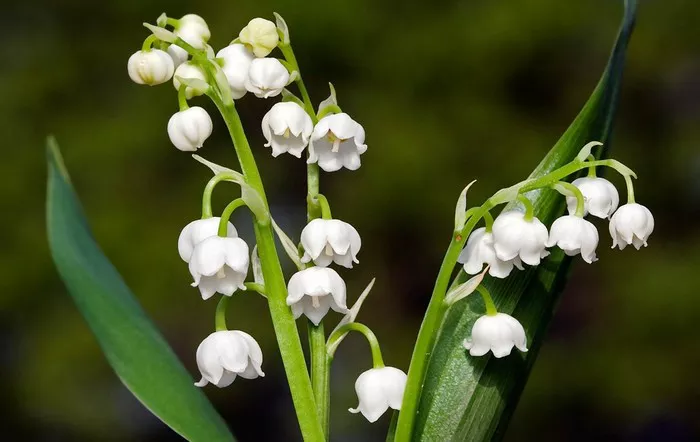Lily of the Valley (Convallaria majalis) captures the hearts of gardeners with its delicate, bell-shaped blooms and enchanting fragrance. Once the blossoms have faded, it’s time to shift focus to post-flowering care to ensure the continued health and beauty of this perennial favorite. This comprehensive guide provides precise instructions on what to do with Lily of the Valley after flowering, covering essential tasks and best practices to promote its vitality and longevity.
Understanding Lily of the Valley
Before delving into post-flowering care, it’s crucial to grasp the characteristics of Lily of the Valley. This perennial herbaceous plant thrives in cool, shaded areas and boasts glossy, lance-shaped leaves. Its fragrant, white flowers typically bloom in spring, adding a touch of elegance to shaded gardens, woodland settings, and even containers. Lily of the Valley spreads through underground rhizomes, gradually forming dense colonies. While its beauty is undeniable, its spreading habit can become invasive under favorable conditions.
1. Removing Spent Flowers
Promptly removing spent flowers is the first task in post-flowering care for Lily of the Valley. This not only tidies up the plant’s appearance but also prevents the formation of seeds, which can lead to unwanted self-seeding and potential invasiveness. Using clean, sharp scissors or pruning shears, snip off the faded flower stems at the base, taking care not to damage the surrounding foliage or emerging shoots.
2. Dividing Overcrowded Clumps
Over time, Lily of the Valley tends to form dense clumps, which can impede its growth and vigor. Dividing the plant is a beneficial practice to rejuvenate it and control its spread. Aim to divide Lily of the Valley every three to four years, preferably in late summer or early autumn when the plant is dormant. Carefully dig up the clump, ensuring you excavate the entire root system. Use a sharp knife or spade to divide the rhizomes into smaller sections, each containing several healthy shoots and roots. Replant the divisions in well-prepared soil, spacing them at least six inches apart to allow for future growth.
3. Providing Adequate Watering
Proper watering is essential for Lily of the Valley, especially after flowering. While these plants prefer consistently moist soil, they can be susceptible to root rot if the soil becomes waterlogged. Water Lily of the Valley regularly, ensuring the soil remains evenly moist but not saturated. During periods of hot, dry weather, increase watering frequency to prevent stress and dehydration. However, avoid overhead watering, as it can promote fungal diseases and foliage damage. Instead, water at the base of the plants early in the morning to allow foliage to dry quickly.
4. Mulching for Moisture Retention
Mulching is beneficial for Lily of the Valley, particularly in regions with harsh winters or hot summers. Apply a layer of organic mulch, such as shredded bark or compost, around the base of the plants. Mulch helps retain soil moisture, suppresses weed growth, and insulates the soil, protecting the plant’s shallow root system. However, be cautious not to pile mulch directly against the stems, as it can promote rot and pest infestations. Maintain a two-inch gap between the mulch and the plant stems to ensure adequate air circulation.
5. Fertilizing with Caution
While Lily of the Valley doesn’t require heavy fertilization, providing a modest nutrient boost after flowering can support its growth and blooming potential. Apply a balanced, slow-release fertilizer around the base of the plants, avoiding excessive nitrogen, which can stimulate lush foliage at the expense of flowers. Opt for a fertilizer with a balanced NPK ratio (nitrogen, phosphorus, and potassium) to promote overall plant health and flowering.
Conclusion
Caring for Lily of the Valley after flowering is crucial for maintaining its health and vigor, ensuring it continues to grace gardens with its timeless beauty and fragrance. By following these precise steps for removing spent flowers, dividing overcrowded clumps, providing adequate watering, mulching for moisture retention, and fertilizing with caution, gardeners can nurture their Lily of the Valley to thrive and flourish year after year. With thoughtful attention and care, this beloved perennial will continue to enchant and delight for seasons to come.


